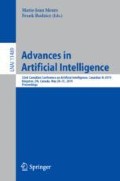Abstract
Image segmentation is considered a crucial step in automatic dermoscopic image analysis as it affects the accuracy of subsequent steps. The huge progress in deep learning has recently revolutionized the image recognition and computer vision domains. In this paper, we compare a supervised deep learning based approach with an unsupervised deep learning based approach for the task of skin lesion segmentation in dermoscopy images. Results show that, by using the default parameter settings and network configurations proposed in the original approaches, although the unsupervised approach could detect fine structures of skin lesions in some occasions, the supervised approach shows much higher accuracy in terms of Dice coefficient and Jaccard index compared to the unsupervised approach, resulting in 77.7% vs. 40% and 67.2% vs. 30.4%, respectively. With a proposed modification to the unsupervised approach, the Dice and Jaccard values improved to 54.3% and 44%, respectively.
Access this chapter
Tax calculation will be finalised at checkout
Purchases are for personal use only
References
About Skin Cancer. http://www.canadianskincancerfoundation.com/about-skin-cancer.html. Accessed 17 Dec 2018
Ronneberger, O., Fischer, P., Brox, T.: U-Net: convolutional networks for biomedical image segmentation. In: Navab, N., Hornegger, J., Wells, W.M., Frangi, A.F. (eds.) MICCAI 2015. LNCS, vol. 9351, pp. 234–241. Springer, Cham (2015). https://doi.org/10.1007/978-3-319-24574-4_28
Badrinarayanan, V., Kendall, A., Cipolla, R.: Segnet: a deep convolutional encoder-decoder architecture for image segmentation. arXiv:1511.00561v2 [cs.CV] (2015)
Kanezaki, A.: Unsupervised image segmentation by backpropagation. IEEE SigPort (2018). http://sigport.org/2710. Accessed 18 Dec 2018
Achanta, R., Shaji, A., Smith, K., Lucchi, A., Fua, P., Süsstrunk, S.: Slic superpixels compared to state-of-the-art superpixel methods. IEEE Trans. Pattern Anal. Mach. Intell. 34(11), 2274–2282 (2012)
Vedaldi, A., Soatto, S.: Quick shift and Kernel methods for mode seeking. In: Forsyth, D., Torr, P., Zisserman, A. (eds.) ECCV 2008. LNCS, vol. 5305, pp. 705–718. Springer, Heidelberg (2008). https://doi.org/10.1007/978-3-540-88693-8_52
Felzenszwalb, P., Huttenlocher, D.: Efficient graph-based image segmentation. Int. J. Comput. Vis. (IJCV) 59(2), 167–181 (2004)
Klambauer, G., Unterthiner, T., Mayr, A, Hochreiter, S.: Self-normalizing neural networks. arXiv preprint arXiv:1706.02515 (2017)
Acknowledgment
The work was supported by Natural Science Foundation of China (Grant No. 71571076).
Author information
Authors and Affiliations
Corresponding author
Editor information
Editors and Affiliations
Rights and permissions
Copyright information
© 2019 Springer Nature Switzerland AG
About this paper
Cite this paper
Ali, AR., Li, J., Trappenberg, T. (2019). Supervised Versus Unsupervised Deep Learning Based Methods for Skin Lesion Segmentation in Dermoscopy Images. In: Meurs, MJ., Rudzicz, F. (eds) Advances in Artificial Intelligence. Canadian AI 2019. Lecture Notes in Computer Science(), vol 11489. Springer, Cham. https://doi.org/10.1007/978-3-030-18305-9_32
Download citation
DOI: https://doi.org/10.1007/978-3-030-18305-9_32
Published:
Publisher Name: Springer, Cham
Print ISBN: 978-3-030-18304-2
Online ISBN: 978-3-030-18305-9
eBook Packages: Computer ScienceComputer Science (R0)

